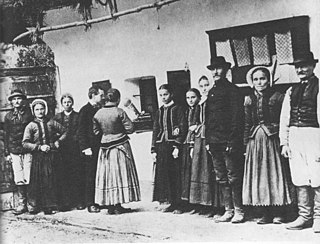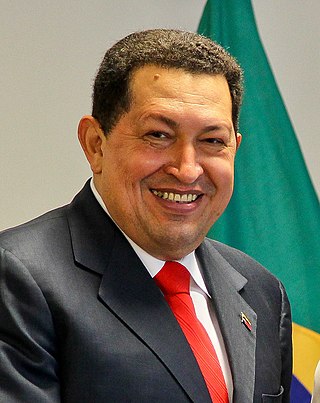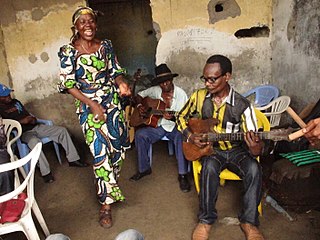Related Research Articles

Contra dance is a form of folk dancing made up of long lines of couples. It has mixed origins from English country dance, Scottish country dance, and French dance styles in the 17th century. Sometimes described as New England folk dance or Appalachian folk dance, contra dances can be found around the world, but are most common in the United States, Canada, and other Anglophone countries.

Folk music is a music genre that includes traditional folk music and the contemporary genre that evolved from the former during the 20th-century folk revival. Some types of folk music may be called world music. Traditional folk music has been defined in several ways: as music transmitted orally, music with unknown composers, music that is played on traditional instruments, music about cultural or national identity, music that changes between generations, music associated with a people's folklore, or music performed by custom over a long period of time. It has been contrasted with commercial and classical styles. The term originated in the 19th century, but folk music extends beyond that.

Venezuela, officially the Bolivarian Republic of Venezuela, is a country on the northern coast of South America, consisting of a continental landmass and many islands and islets in the Caribbean Sea. Venezuela comprises an area of 916,445 km2 (353,841 sq mi), and its population was estimated at 29 million in 2022. The capital and largest urban agglomeration is the city of Caracas.

Hugo Rafael Chávez Frías was a Venezuelan politician and military officer who served as president of Venezuela from 1999 until his death in 2013, except for a brief period of forty-seven hours in 2002. Chávez was also leader of the Fifth Republic Movement political party from its foundation in 1997 until 2007, when it merged with several other parties to form the United Socialist Party of Venezuela (PSUV), which he led until 2012.
The music of Latin America refers to music originating from Latin America, namely the Romance-speaking regions of the Americas south of the United States. Latin American music also incorporate the Indigenous peoples of the Americas. Due to its highly syncretic nature, Latin American music encompasses a wide variety of styles, including influential genres such as cumbia, bachata, bossa nova, merengue, rumba, salsa, samba, son, and tango. During the 20th century, many styles were influenced by the music of the United States giving rise to genres such as Latin pop, rock, jazz, hip hop, and reggaeton.

Romani music is the music of the Romani people who have their origins in northern India but today live mostly in Europe.

Korea has produced music from thousands of years, until the modern day. After the division of Korea in 1945, both North and South Korea have produced their own styles of music.
Bolero is a genre of song which originated in eastern Cuba in the late 19th century as part of the trova tradition. Unrelated to the older Spanish dance of the same name, bolero is characterized by sophisticated lyrics dealing with love. It has been called the "quintessential Latin American romantic song of the twentieth century".

Soukous is a genre of dance music originating from the Democratic Republic of the Congo and the Republic of the Congo. It derived from Congolese rumba in the 1960s, with faster dance rhythms and bright, intricate guitar improvisation, and gained popularity in the 1980s in France. Although often used by journalists as a synonym for Congolese rumba, both the music and dance associated with soukous differ from more traditional rumba, especially in its higher tempo, song structures and longer dance sequences.
Latin rock is a term to describe a subgenre blending traditional sounds and elements of Latin American and Hispanic Caribbean folk with rock music. However, it is widely used in the English-language media to refer any kind of rock music featuring Spanish or Portuguese vocals. This has led to controversy about the scope of the terminology.

Congolese rumba, also known as African rumba, is a dance music genre originating from the Democratic Republic of the Congo and the Republic of the Congo. With its rhythms, melodies, and lyrics, Congolese rumba has gained global recognition and remains an integral part of African music heritage. In December 2021, it was added to the UNESCO list of intangible cultural heritage.

The kayamb or kayamba is a flat musical instrument, a shaken idiophone, used in the African countries to play different types of music. It is called maravanne in Mauritius, or caïamb or kayanm in Reunion.
The galerón are two genres of Venezuelan typical song. The Eastern galerón is sung in improvised ten-line stanzas. Generally, it is accompanied by mandolin, cuatro, and guitar. It is normally played in the Cruz de Mayo celebrations, the improvised lyrics honoring the Cross. It is related to the guajiro (Cuba), torbellino (Colombia), and trova.
The zongora is an instrument typical of Maramureș, a region of Romania. It is similar to a guitar, but has fewer strings. In the past it had two strings, but nowadays it has four or even five. When played, the instrument is usually held vertically. The string layout is compressed to the central inch of the fingerboard to allow rapid rhythmical strumming. Recent musicians make more harmonic changes than in the past, but still use only major chords.
Kajari is a folk song and dance genre from Uttar Pradesh, in India. It is a Hindustani classical music genre, performed during the rainy season usually late June to September when lush greenery reappears and agricultural labor begins again.
This is a timeline of music in the United States from 1950 to 1969.
The Panamanian punto is a Hispanic musical genre which includes melodic and choreographic form. It has composition created specifically for dance, typically performed by a single couple as a demonstration of skill, precision and grace. Unlike the tamborito and the Panamanian cumbia, it is performed as an intermission between other dances or music at a party or event.
Mardani Jhumar( also Mardana Jhumar) is a Nagpuri folk dance performed by men in the Indian states of Jharkhand, Chhattisgarh and Odisha. It is performed after harvest in fair. Men wear ghongroo, hold sword, shield and dance in a circle by holding each other's hand. Musical instruments used in this dance are mandar, nagara, dhak and Shehnai or bansi. The dance movement reflects masculine energy. Sometimes women dancers accompany them, who are known as Nacni.
References
- ↑ "The Tamunangue Folk Dance". World Digital Library. Retrieved 16 July 2013.
- ↑ Ellen Koskoff (2008). The Concise Garland Encyclopedia of World Music. Routledge. pp. 205–. ISBN 978-0-415-99403-3 . Retrieved 16 July 2013.
- ↑ Dale Olsen; Daniel Sheehy (24 October 2007). The Garland Handbook of Latin American Music. Taylor & Francis. pp. 304–. ISBN 978-0-203-93454-8 . Retrieved 16 July 2013.